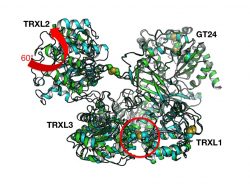A blind date with an old friend: crystal structures of Cys-S-sulfonic acid GAPDH
Biologists interested in the function or the 3D shape of a certain protein face the task of isolating billions of copies of that protein from cells (a process called “protein purification” which does not involve washing or holy water). The aim of protein purification is to start with cells that contain the protein of interest Read More …

